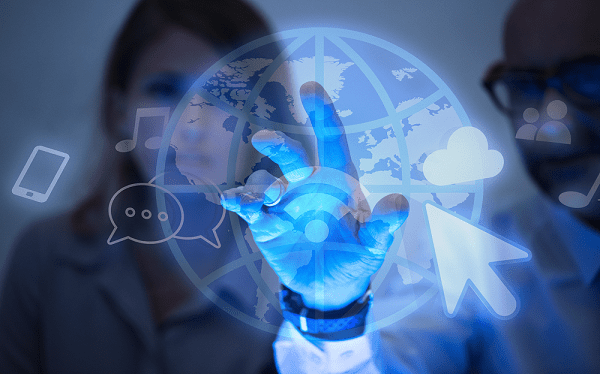
By: Allyxon Cua
President, AMTI
It’s been more than a month since the Enhanced Community Quarantine (ECQ) in the National Capital Region (NCR) and the lockdown in the whole of Luzon was implemented by the Philippine government due to the global health crisis caused by the pandemic, COVID-19. This may have caused a lot of adverse effects in our living lifestyle but we know that it’s for our own good and safety to avoid further spread of the virus. However, if we look at the positive impacts of this quarantine particularly here in Metro Manila, we’ll see that there are no more rush hour traffic jams and the air is clean due to reduced carbon emissions. We can now appreciate the beauty of our city view and clear skies. We also witness strong Filipino bayanihan with endless help from one another like we always do during hard times like this.
On the economic side of things, the pandemic initiated a comprehensive turn on workforce and business operations. Some companies stopped their operations, while others, including us, compromised in enforcing a skeletal workforce or a work-from-home policy to continue our services.
While workforce or business operations vary by industry and business maturity, the quick enforcement of remote work during this pandemic became the most challenging and crucial adjustment of business leaders to attend to the needs of their employees and customers while going through operational and economic challenges.
The Conditions of Work-from-Home in today’s Pandemic

The work-from-home (WFH) arrangement for business continuity can help lessen the possible revenue loss, produce a different level of support from their workforce, and discover new and efficient ways of carrying out their day-to-day business activities. The initiative could be a quick reaction to the current situation out of necessity, or it could be a case of accelerating a long-time plan. However, from my viewpoint, there are challenges that businesses faced in terms of productivity measurement, technology adoption and automation, support, and security.
– Employee output and productivity. If leaders and HR would not define the work objectives and KPIs of employees clearly, it will be difficult for them to track and maintain productivity. Management must set clear and reasonable expectations and address this by establishing an automated mechanism to measure workforce productivity.
– Technology adoption and automation. Most companies are still doing a combined manual and automated business processes. Although there are ways to bridge such a gap, these companies will evolve and would become more efficient as they continue their operations during the pandemic. But in reality, most companies in the Philippines are still heavily dependent on printed output or paperwork to manually carry out day-to-day tasks in the office.
– Support. For most companies, providing technical support within the office premises and remote branches is already a challenge. The complexity level of support is amplified now that you have to support remote users with different user profiles, devices, and operating systems. Managing and monitoring these assets and imposing a level of control to ensure compliance is an added burden to the already inadequate and strained IT support.
– Secured remote access. If businesses extend the perimeter of their network beyond the office and branch premises, this would require another layer of security protection. This added layer would ensure that every remote connection is authenticated, authorized, managed and encrypted.
For me, every business needs to understand and identify work policies and culture (by having a sensitive management and HR Team) to achieve effective WFH conditions. The current crisis shows that employees can work remotely and maintain productivity. If the leaders properly address the challenges in IT and employee, remote work for selected workforce can reduce office space cost, travel time, and improve customer and employee satisfaction.
Work-from-Home Productivity Fundamentals
With the availability of innovative technologies like Cloud, Mobility, Artificial Intelligence / Machine Learning, and IoT / Edge, businesses from other parts of the world were able to thrive with completely remote teams even before the pandemic struck. Some countries like the United States and some parts of Europe adopted remote working as their standard work arrangement.

Here are the key enabling technologies that can support a good remote workforce system:
– Broadband Connectivity. A primary requirement in order to quickly and effectively connect to your company’s data center and other cloud-based productivity tools and business applications.
– Business Mobility. Gives employees the ability to work anywhere using a variety of compute devices. Providing workforce with the right choice of devices drive productivity and open up new ways of empowering and innovating one’s workforce.
– Cloud. Allows employees to access business applications, anytime and anywhere via virtual infrastructure or environment. Public clouds such as AWS or Azure and in-country solutions (from local telco and Cloud Service providers) are also available in the Philippines. Local cloud providers can often help in terms of complying with Philippine laws and regulations, providing lower network latency to support various applications, managing data transfer costs, and providing offsite backups.
– Collaboration and Digital Tools. Enable a team to communicate and discuss important concerns and tasks quickly and efficiently (i.e. video conferencing, email, instant messaging, etc.). There is an unprecedented uptake of web conference tools in the past month such as Zoom, Microsoft Teams, Webex, Google Hangouts, etc. Inter-company employee emails also increased significantly.
– Security. Ensures that every access is authenticated, authorized, encrypted and managed with an updated end-point security policy to safeguard valuable company data (i.e. VPN, anti-virus/anti/malware, firewall, two-factor or multiple factor authentication, etc.). Security is paramount and varies per industry. Every company will have to adopt different levels of security posture. Traditionally, companies only secure their perimeter. But today, that perimeter is blurring because of the cloud and no longer limited within the office intranet — with WFH policy, companies must adopt end-to-end security posture, securing north-south and east-west traffic from the core of their network to the edge to the cloud.
While several companies were able to enforce WFH at this point, some industries are reluctant to impose such a workforce system due to some strict regulatory framework and compliance. For example, the financial sector is highly regulated and prone to cyber-attacks, therefore, the security requirement is more stringent than the other sectors. Technologies such as VDI, RDS, and DaaS coupled with a zero trust security architecture are solutions that they can consider to deliver end-to-end secure remote WFH arrangement.
Accelerating Workforce Transformation (WFT)
I think companies that started to transform digitally will likely survive the business disruption brought by the pandemic. However, for some, this perhaps sparked them to rethink their current workforce arrangement and possibly accelerate their approach to workforce transformation developing a digital work culture that drives innovation.
In my opinion, workforce transformation is present and given; it is there waiting to happen for companies to embrace it to stay versatile, globally competitive, and successful. We just need to restructure our business processes — from paperless to digital automation is one-step to digitize our workforce. Having a clear and proper plan or strategy, incorporating the right tools, software, and technologies, plus digitally systematize can make a significant impact, a step towards digital transformation, and create successful bottom-line results.
—
With the leadership of AMTI President, Mr. Allyxon Cua, AMTI is offering its Digital Transformation Collaborative Consulting Services (DX) and has built an ecosystem of technology partners, acquired the necessary business, and technical skillsets to help our customers on their Digital Transformation journey.
Even at this unprecedented time, our engineers, sales, and back-end people are working round-the-clock to support sectors that are exempted from work restriction of an Enhance Community Quarantine order by the Philippine Government.
For questions or inquiries on Workforce Transformation, you may email [email protected]

